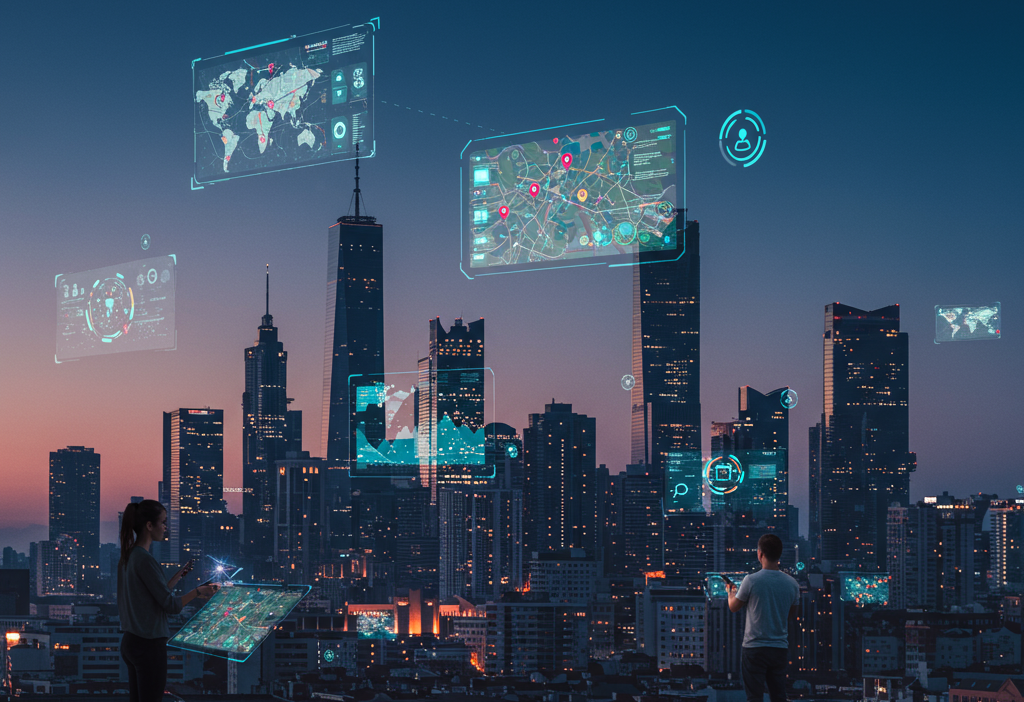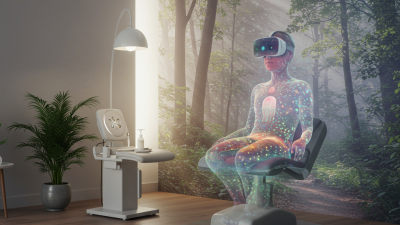As urban populations swell and cities confront complex challenges—from traffic congestion to aging infrastructure—municipal leaders seek innovative solutions to plan, manage, and engage. Augmented Reality (AR) overlays digital data onto the physical world, empowering stakeholders to visualize projects, access real-time information, and collaborate in context. This article examines how AR technologies integrate with smart city initiatives to optimize urban planning, infrastructure maintenance, public transportation, and citizen participation.
What Makes a City “Smart”?

A smart city leverages sensors, connectivity, and data analytics to improve the quality of life and operational efficiency. Key components include:
- IoT Infrastructure: Networked devices collect environmental, traffic, and utility data in real time.
- Data Platforms: Centralized systems aggregate and analyze information to guide decisions.
- Citizen-Centric Services: Mobile apps and portals enable residents to report issues and receive alerts.
While dashboards and maps drive core analytics, AR brings data directly into the field, improving situational awareness for planners, technicians, and citizens alike.
AR Technologies Driving Smart Cities
Modern AR systems include marker-based and markerless tracking, spatial mapping, and location-based services. Common technologies are:
- Wearable AR Devices: Glasses or headsets (e.g., Microsoft HoloLens) overlay holographic models on-site.
- Mobile AR Apps: Smartphones and tablets use cameras and GPS to display contextual information.
- Digital Twins: Real-time 3D replicas of city assets synchronize with IoT sensors for monitoring.
- Edge Computing: Low-latency processing ensures smooth AR experiences even in dense urban areas.
By combining these tools with cloud analytics and 5G connectivity, cities can deploy AR at scale to support a range of applications.
Use Case: Urban Planning & Design
Traditional planning relies on 2D maps, sketches, and public meetings. AR transforms this process by letting stakeholders:
- Visualize proposed buildings in their real environment, viewing height, scale, and shadow impacts.
- Explore zoning options interactively through mobile devices or AR panels at planning offices.
- Conduct immersive public consultations, where residents can walk through virtual streetscapes.
This immersive approach reduces misunderstandings, accelerates approvals, and fosters community buy-in by making abstract plans tangible.
Use Case: Infrastructure Monitoring & Maintenance
Aging utilities, roads, and bridges require frequent inspections. AR-enabled field technicians can:
- Access real-time schematics overlayed on equipment, highlighting pipelines, electrical conduits, or valve locations.
- Receive guided repair instructions step by step, reducing errors and training time.
- Report faults on the spot with geotagged annotations linked to asset-management systems.
By integrating AR with digital twin models and predictive analytics, maintenance becomes proactive rather than reactive, extending asset lifecycles and saving costs.
Use Case: Public Transportation & Wayfinding
Navigating a city can be daunting for visitors and residents alike. AR enhances mobility by offering:
- Live navigation overlays showing bus routes, arrival times, and transfer options directly on sidewalks and stations.
- Indoor wayfinding in transit hubs, guiding users to platforms, exits, and amenities via floor markers or digital signage.
- Accessibility routes for people with disabilities, highlighting ramps, elevators, and tactile pathways.
These AR-enabled features reduce confusion, improve rider satisfaction, and can adapt dynamically to service changes or disruptions.
Use Case: Citizen Engagement & Participatory Governance
Engaging residents in decision-making is essential for inclusive urban development. AR apps empower citizens to:
- Report potholes, graffiti, or malfunctioning streetlights by simply pointing a smartphone camera.
- View proposed community projects—parks, public art, bike lanes—in situ before construction begins.
- Participate in virtual town halls where 3D models of new developments can be explored interactively.
By lowering barriers to feedback, AR fosters transparency, trust, and a sense of shared ownership over city improvements.
Challenges & Considerations
While AR offers significant promise, implementing it in urban contexts requires careful planning. Key challenges include:
- Privacy & Data Security: AR applications collect location and sensor data, necessitating robust encryption and clear consent policies.
- Device Accessibility: High-end AR headsets remain costly; cities must support a range of devices and ensure equity.
- Interoperability: Diverse platforms and standards can fragment experiences unless open APIs and frameworks are adopted.
- Digital Literacy: Effective use demands training for city staff and outreach to residents unfamiliar with AR.
Addressing these considerations through open data initiatives, public–private partnerships, and inclusive design will be vital to sustainable deployments.
Future Outlook & Trends

Emerging developments will accelerate the fusion of AR and smart cities:
- 5G & Edge AI: Ultra-low latency and on-device AI will yield seamless, context-aware AR services.
- Expanded Digital Twins: City-scale virtual models synchronized in real time will support simulation, emergency management, and energy optimization.
- Mixed Reality Collaboration: Remote experts can guide on-site workers through complex tasks with holographic annotations.
- Sustainability Focus: AR-driven monitoring of emissions, waste, and resource use will advance environmental goals.
As technologies converge, AR will become an integral layer of the smart city fabric, connecting people, places, and data in real time.
Conclusion
Augmented Reality offers transformative potential for smart city ecosystems by making data tangible, processes transparent, and engagement inclusive. From urban planning to maintenance, transportation, and participatory governance, AR can optimize operations and strengthen community bonds. By addressing privacy, accessibility, and interoperability challenges, municipalities can harness AR to build more resilient, responsive, and citizen-centered urban environments.





